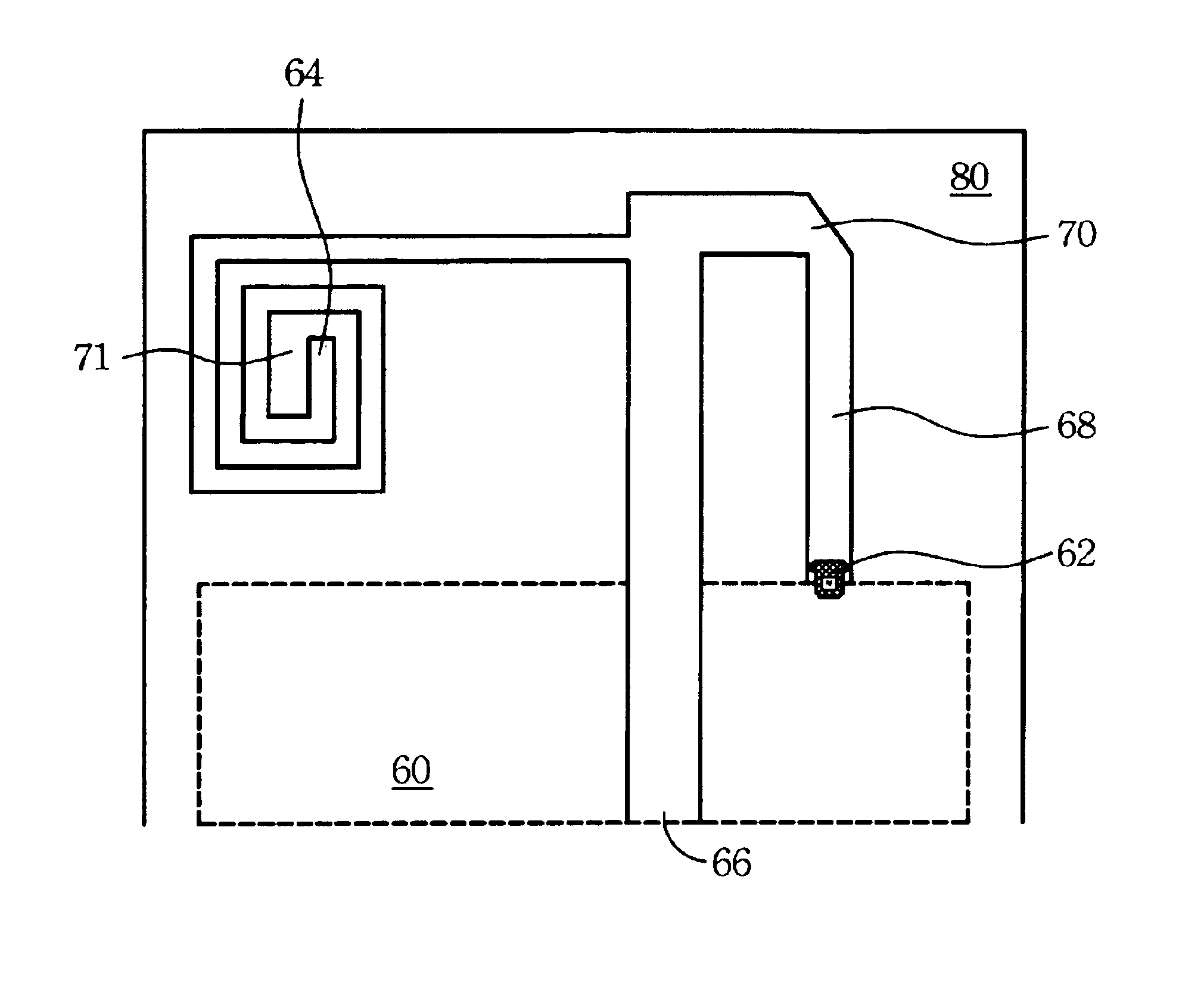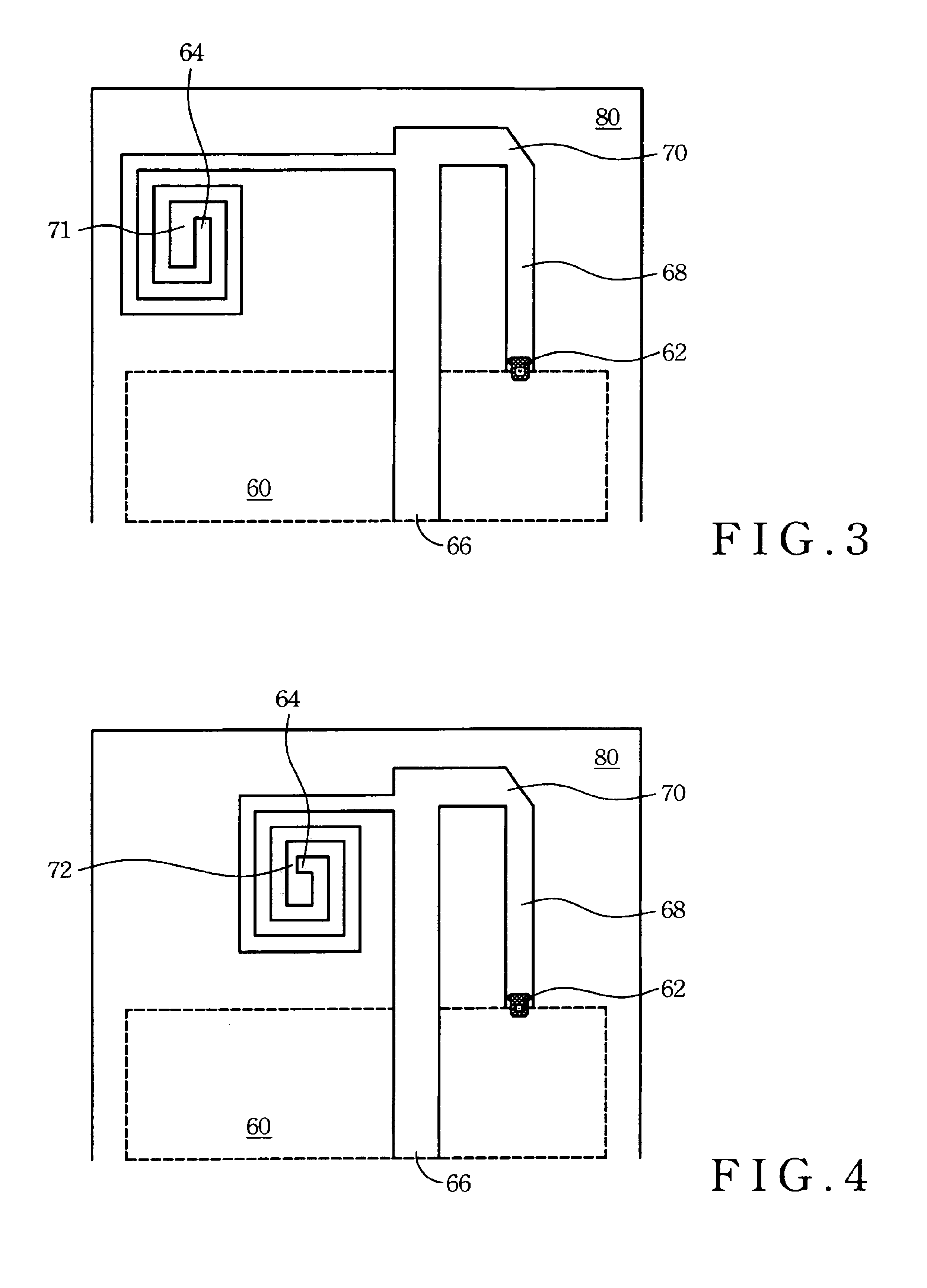Dual frequency band inverted-F antenna
a technology of inverted antenna and frequency band, which is applied in the structure of radiating elements, elongated active element feed, and resonance antennas, etc., can solve the problems of unbreakable limitation of one-quarter signal, inability to effectively shrink, and limited antenna size of communication products, so as to achieve the effect of reducing the resonance frequency
- Summary
- Abstract
- Description
- Claims
- Application Information
AI Technical Summary
Benefits of technology
Problems solved by technology
Method used
Image
Examples
first embodiment
[0024]Referring to FIG. 3 for the present invention, the dual frequency band inverted-F antenna includes a substrate 80, a ground metal 60, a feeding leg 66, a short circuit leg 68 and a vortical metal structure 71. The substrate 80 is a dielectric material where the ground metal 60, the feeding leg 66, the short circuit leg 68 and the vortical metal structure 71 are formed thereon as printed circuits. Besides, the ground metal 60 shown in a dotted line in the drawing is formed on a lower surface of the substrate 80, and, on the other hand, the other parts of the antenna shown in dark color in the drawing are formed on an upper surface of the substrate 80. The vortical metal structure 71 is formed by an elongated metal strip bending into a vortical structure or made of a sheet of metal by punching into a vortical structure. The vortical metal structure 71 can further have an open circuit end 64 and a short circuit end 70 to form an open circuit-short circuit structure, in which the ...
third embodiment
[0030]Referring now to FIG. 7 for the present invention, the dual frequency band inverted-F antenna can include a substrate 90, a ground metal 84, a feeding leg 86, a short circuit leg 88, a vortical metal structure 94, and a terminal micro strip 76. The substrate 90 is a dielectric material, and the ground metal 84, the feeding leg 86, the short circuit leg 88, the vortical metal structure 94, and the terminal micro strip 76 are formed as printed circuits located on the substrate 90. Besides, the ground metal 84 and the terminal micro strip 76 shown in dotted lines are formed on the back side of the substrate 90, while the other parts of the antenna shown all in solid lines are formed on the front side of the substrate 90. The vortical metal structure 94 is formed by bending an elongated metal strip into a vortical structure or made of a sheet of metal by punching into a vortical structure. The vortical metal structure 94 further provides an open circuit end 78 and a short circuit ...
PUM
 Login to View More
Login to View More Abstract
Description
Claims
Application Information
 Login to View More
Login to View More - R&D
- Intellectual Property
- Life Sciences
- Materials
- Tech Scout
- Unparalleled Data Quality
- Higher Quality Content
- 60% Fewer Hallucinations
Browse by: Latest US Patents, China's latest patents, Technical Efficacy Thesaurus, Application Domain, Technology Topic, Popular Technical Reports.
© 2025 PatSnap. All rights reserved.Legal|Privacy policy|Modern Slavery Act Transparency Statement|Sitemap|About US| Contact US: help@patsnap.com



